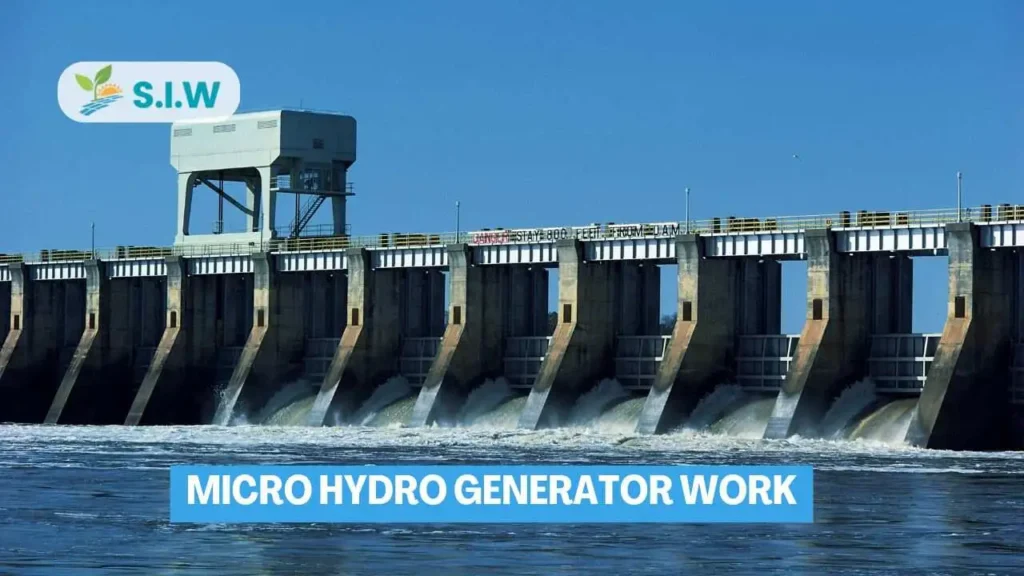Micro hydro generators are an innovative and efficient solution for harnessing the power of flowing water to generate electricity on a small scale. This technology offers a sustainable energy source, particularly valuable in remote locations where traditional power infrastructure is not feasible. In this comprehensive guide, we will delve into the intricacies of how micro hydro generators operate, their components, advantages, and considerations for implementation.
Micro Hydro Generators
Micro hydro generators, often referred to as micro hydro systems, are small-scale hydropower installations designed to generate electricity from the kinetic energy of flowing water. Unlike large hydroelectric dams, micro hydro systems are more adaptable and can be deployed in various settings, including small rivers, streams, and even irrigation channels.
Core Principles of Micro Hydro Technology
The fundamental principle behind a micro hydro generator is the conversion of the potential and kinetic energy of moving water into mechanical energy, which is then transformed into electrical Commercial solar panels. This process involves several key components and stages, each contributing to the overall efficiency and effectiveness of the system.
1. Water Source and Flow
The first and most critical element of a micro hydro system is the water source. The efficiency of the system largely depends on the flow rate and head height of the water source. Flow rate refers to the volume of water passing a point per unit of time, while head height is the vertical distance the water falls. These factors determine the amount of energy that can be harnessed.
2. Intake System
The intake system is responsible for directing the water from the source to the turbine. It typically consists of a screened intake to prevent debris from entering the system, a conduit or pipe to transport the water, and a settlement tank to allow sediment to settle before the water reaches the turbine.
3. Penstock
The penstock is a crucial component that channels the water from the intake system to the turbine. It is essentially a pipe or conduit that ensures a controlled flow of water. The design and material of the penstock can significantly impact the efficiency of the system, as it must minimize friction and energy loss.
4. Turbine
The turbine is the heart of the micro hydro generator. It converts the kinetic energy of the flowing water into mechanical energy. There are various types of turbines used in micro hydro systems, including Pelton wheels, Francis turbines, and Kaplan turbines. The choice of turbine depends on the specific characteristics of the water source, such as flow rate and head height.
Pelton Wheel Turbines
Pelton wheel turbines are ideal for high-head, low-flow situations. They work by directing water jets onto the cups of the turbine, causing it to spin. This type of turbine is known for its high efficiency in converting high-pressure water into rotational energy.
Francis Turbines
Francis turbines are suitable for medium-head and medium-flow applications. They operate by allowing water to enter the turbine radially and exit axially. This design offers a good balance between efficiency and versatility.
Kaplan Turbines
Kaplan turbines are designed for low-head, high-flow conditions. They feature adjustable blades that can be changed to optimize performance based on varying flow conditions.
5. Generator
The generator converts the mechanical energy from the turbine into electrical energy. There are several types of generators used in micro hydro systems, including induction generators, synchronous generators, and permanent magnet generators. The choice of generator depends on factors such as the desired voltage, power output, and system compatibility.
6. Control Systems
Control systems are essential for managing the operation of the micro hydro generator. They regulate the flow of water to the turbine, adjust generator output, and ensure system safety. Modern control systems often include advanced features such as remote monitoring and automatic shutdown mechanisms.
Advantages of Micro Hydro Generators
Micro hydro generators offer numerous benefits that make them an attractive option for sustainable energy generation.
1. Renewable Energy Source
Micro hydro systems utilize the natural flow of water, which is a renewable resource. Unlike fossil fuels, which are finite and environmentally damaging, water is a sustainable source of energy that can be harnessed with minimal environmental impact.
2. Reliability and Consistency
Compared to other renewable energy sources like wind and solar batteries, micro hydro generators provide a more consistent and reliable power supply. Water flow can be more predictable than wind patterns or sunlight, making micro hydro systems a dependable energy source.
3. Low Environmental Impact
Micro hydro generators have a minimal environmental footprint compared to large-scale hydroelectric projects. They typically require less land, disrupt fewer ecosystems, and avoid the large-scale flooding associated with traditional dams.








